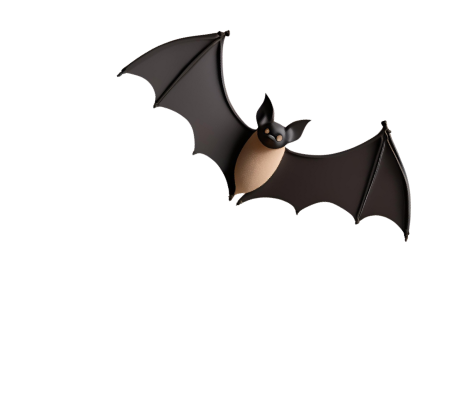

enduri-Principle
“Three-Pillar Principle”
enduri is based on the “Three-Pillar Principle.” The focus is on personal learning needs, learning knowledge and strategies, as well as dialogue and cooperation. This is a strengths- and progress-oriented approach. The content is guided by the latest scientific findings in the fields of pedagogy, neuroscience, and psychology.
1.Pillar: Person and Needs
Learning doesn’t begin with the question “What can you do?” but rather with “Who are you?” The enduri Learner ID identifies what students need to learn optimally. The enduri Learner ID provides teachers, students, and parents with an overview of the learner’s motivation, goals, needs, visions, and strengths. This Learner ID serves as a foundation for conversations and for building mutual trust. Being seen, heard, and thus understood supports each learner’s personal and academic development.
2. Pillar: Skills and Strategies
Learning is hard work. Those equipped with the right tools have a significant advantage: learning becomes not only more efficient but also begins to make sense and be enjoyable. enduri strategies, goal-setting aids, and learning tips help students assemble an ideal toolkit for learning—and to “master” it. enduri emphasizes understanding, applying, repeating, and adjusting learning strategies. These are meant to be useful for learners not only in school but also in daily life.
3. Pillar: Dialogue and Cooperation
Learning is never a monologue. To understand, apply, and reflect on knowledge, dialogue and cooperation are essential. enduri supports this ongoing exchange through reflection opportunities, coaching, and feedback.
Sources
Al-Azawei, A., Serenelli, F., & Lundqvist, K. (2016).
Universal Design for Learning (UDL): A content analysis of peer-reviewed journal papers from 2012 to 2015
Journal of the Scholarship of Teaching and Learning, 16(3), 39-56.
Andersson, H., Bergman, L. R. (2011).
Developmental Psychology, 47(4), 950–960.
Benner, A. D., & Mistry, R. S. (2007).
Congruence of mother and teacher educational expectations and low-income youth’s academic competence.
Journal of Educational Psychology, 99(1), 140–153.
Bjork, R. A., Dunlosky, J., & Kornell, N. (2013).
Annual Review of Psychology, 64, 417–444.
Brooks, A. C. (2021, August 26).
The real reason kids don’t like school.*
The Atlantic.
Brown, B. (2012).
Daring Greatly: How the Courage to Be Vulnerable Transforms the Way We Live, Love, Parent, and Lead.
Gotham Books.
Carless, D. (2006).
Differing perceptions in the feedback process.
Studies in Higher Education, 31(2), 219–233.
Center for Applied Special Technology (CAST). (2014).
Wakefield, MA: Center for Applied Special Technology.
Chang, B., Xu, R., Watt, T. (2018).
Adult Education Research Conference.
Chase, W. G., Simon, H. A. (1973).
Perception in chess.
Cognitive Psychology, 4(1), 55–81.
Coffield, F., Moseley, D., Hall, E., & Ecclestone, K. (2004).
Learning styles and pedagogy in post-16 learning: A systematic and critical review.
London: Learning & Skills Research Centre.
Collins, S. (2019).
Neuroscience for Learning and Development: How to Apply Neuroscience and Psychology for Improved Learning and Training.
Kogan Page.
Cross, J. (2006).
Informal Learning: Rediscovering the Natural Pathways That Inspire Innovation and Performance.
Pfeiffer.
Cross, J. (2015).
Real Learning.
Internet Time Group Press.
Cushing, C., Bodner, G. E. (2022).
Journal of Applied Research in Memory and Cognition, 11(3), 427-436.
Deans for Impact. (2019).
Dekker, S., Lee, N. C., Howard-Jones, P., & Jolles, J. (2012).
Frontiers in Psychology, 3, 429.
Denworth, L. (May 1, 2021).
Scientific American.
Department for Education (UK). (2022).
de Saint-Exupéry, A. (1943).
Le Petit Prince.
Reynal & Hitchcock.
Dhority, H. (2005).
Die Kunst des Dialogs: Kreative Kommunikation entdecken.
Erfahrungen, Anregungen, Übungen. Klett-Cotta.
Dunlosky, J., Rawson, K. A., Marsh, E. J., Nathan, M. J., & Willingham, D. T. (2013).
Improving Students’ Learning with Effective Learning Techniques: Promising Directions from Cognitive and Educational Psychology.
Psychological Science in the Public Interest, 14(1), 4–58.
Dunning, D. (2006).
Strangers to ourselves.
The Psychologist, 19(10), 600–603.
Driscoll, K. C., Pianta, R. C. (2010).
Banking time in head start: Early efficacy of an intervention designed to promote supportive teacher-child relationships.
Early Education and Development, 21, 38–64.
Ericsson, K. Anders., Krampe, Ralf Th., Tesch-Römer, Clemens. (1993).
The Role of Deliberate Practice in the Acquisition of Expert Performance.
Psychological Review, 100(3), 363–406.
Eschelmüller, M., Kummer Wyss, A., & Baeriswyl, F. (2020).
Lerncoaching im Unterricht: Gesamtkonzeption und Praxis.
Schulverlag Plus AG.
Eskreis-Winkler, L., Fishbach, A. (2019).
Not learning from failure – The greatest failure of all.
Psychological Science, 30(11), 1733–1744.
Facing History and Ourselves. (2015).
Farr, R., & Conner, J. (2004).
Using Think-Alouds to Improve Reading Comprehension.
International Reading Association.
Feldon, D. F. (2007).
Cognitive load and classroom teaching: The double-edged sword of automaticity.
Educational Psychologist, 42(3), 123-137.
Good, T. L., Slavings, R. L., Harel, K. H., & Emerson, H. (1987).
Student passivity: A study of question asking in K-12 classrooms.
Sociology of Education, 60(3), 181–199.
Fredrickson, B. L. (2013).
Positive emotions broaden and build.
Advances in Experimental Social Psychology, 47, 1-53.
Fredrickson, B. L. (2002).
The role of positive emotions in positive psychology: The broaden-and-build theory of positive emotions.
American Psychologist, 56(3), 218-226.
Gardner, H. (2007).
Five Minds for the Future.
Harvard Business Review Press.
Grossmann, Klaus E., Grossmann, Karin. (2006).
Bindung und Bildung: Über das Zusammenspiel von psychischer Sicherheit und kulturellem Lernen.
Frühe Kindheit, 09/2006, Deutschland.
Halamish, V. (2018).
https://doi.org/10.3389/fpsyg.2018.02152
Frontiers in Psychology.
Hartwig, M. K., & Dunlosky, J. (2011).
Study Strategies of College Students: Are Self-Testing and Scheduling Related to Achievement?
Psychonomic Bulletin & Review, 19(1), 126-134.
Hattie, John. (2012).
Visible Learning for Teachers: Maximizing Impact on Learning.
London: Routledge.
Hattie, J., Yates, G. (2014).
Visible learning and the science of how we learn.
London: Routledge.
Hattie, John. (2012).
Visible Learning for Teachers: Maximizing Impact on Learning.
Routledge.
Hildebrandt, D. (2009).
Gedanken zur Zeit: Was passiert gerade in Ihrem Hirn?
Braunschweiger Zeitung, 12 December 2009, p. 4.
Horn, M. B. (2022).
From reopen to reinvent: (Re)creating school for every child.
San Francisco: Jossey-Bass.
Hughes, J. N., Wu, J.-Y., Villarreal, V., Kwok, O.-M., & Johnson, A. Y. (2012).
Journal of Educational Psychology, 104(2), 350–365.
Hughes, C., Acedo, C. (2015).
Guiding Principles for Learning in the Twenty-First Century.
Educational Practices Series, 28. International Academy of Education.
Janusik, L. A. (2012).
https://doi.org/10.1080/10904018.2002.10499047
Southern Communication Journal.
Jensen, F. E. (2015).
The Teenage Brain.
HarperCollins Publishers.
Kahneman, D. (2011).
Thinking, Fast and Slow.
Farrar, Straus and Giroux.
Kagge, Erling. (2020).
One Step at a Time.
New York: Penguin Random House.
Karpicke, J. D., Butler, A. C., & Roediger, H. L. (2009).
Purdue University, Washington University.
Keller, T., Grimm, M. (2005).
In T. Barkowsky, M. Knauff, G. Ligozat, & D. R. Montello (Eds.), Spatial Cognition IV. Reasoning, Action, Interaction. Lecture Notes in Computer Science, vol 3426. Springer, Berlin, Heidelberg.
Kempermann, Gerd. (2016).
Die Revolution im Kopf: Wie neue Nervenzellen unser Gehirn ein Leben lang jung halten.
München: Droemer Knaur (eBook).
Kim, Jeansok J., Diamond, David M. (2002).
The stressed hippocampus, synaptic plasticity, and lost memories.
Kornell, N., & Bjork, R. A. (2007).
The Promise and Perils of Self-Regulated Study.
Psychonomic Bulletin & Review, 14(2), 219-224.
Kucirkova, N., Levine, M. (2024).
Hechinger Report.
Leopold, C., Leutner, D. (2002).
Der Einsatz von Lernstrategien in einer konkreten Lernsituation bei Schülern unterschiedlicher Jahrgangsstufen.
Zeitschrift für Pädagogik, 45(2), 240-258.
Lilienfeld, S. (2010).
Fifty great myths of popular psychology.
Chichester, UK: Wiley-Blackwell.
Little, M., & Kobak, R. (2003).
Emotional security with teachers and children's stress reactivity: A comparison of special-education and regular-education classrooms.
Journal of Clinical Child & Adolescent Psychology, 32(1), 127-138.
Mandl, H., Friedrich, H. F. (2005).
Handbuch Lernstrategien.
Hogrefe.
Made By Dyslexia. (2024).
Made By Dyslexia. (2024).
Adult Education Research Conference.
Mangardich, H., Sabbagh, M. A. (2017).
Children remember words from ignorant speakers but do not attach meaning: Evidence from event-related potentials.
Developmental Science, 21(2).
Martin, H. R. (2023).
Learning to Learn.
Hodder Education.
Massa, L. J., & Mayer, R. E. (2006).
Learning and Individual Differences, 16(4), 321-335.
McCabe, J. (2011).
Metacognitive Awareness of Learning Strategies in Undergraduates.
Memory & Cognition, 39(3), 462-476.
McIntyre, D., Pedder, D., & Rudduck, J. (2005).
Pupil voice: Comfortable and uncomfortable learnings for teachers.
Research Papers in Education, 20(2), 149–168.
Mebis. (n.d.).
Medina, John. (2014).
Brain Rules. 12 Principles for Surviving and Thriving at Work, Home, and School.
Pear Press.
Moeller, J., Brackett, M. A., Ivcevic, Z., & White, A. E. (2020).
High school students’ feelings: Discoveries from a large national survey and an experience sampling study.
Learning and Instruction, 66, 101301.
Mosell, R. (2016).
Systemische Pädagogik. Ein Leitfaden für Praktiker.
Beltz.
Murphy, P. A. (2021).
Houghton Mifflin Harcourt.
Ness Labs. (n.d.).
Neubert, S., Reich, K., & Voß, R. (2001).
Lernen als konstruktiver Prozess.
In T. Hug (Ed.), Die Wissenschaft und ihr Wissen (Vol. 1). Baltmannsweiler.
Neuroscience News. (2021).
Novak, K. (2022).
UDL Now! A Teacher’s Guide to Applying Universal Design for Learning (3rd ed.).
CAST Professional Publishing.
Paivio, A. (1986).
Mental representations: A dual coding approach.
Oxford: Oxford University Press.
Palincsar, A. S., & Brown, A. L. (1984).
Reciprocal teaching of comprehension-fostering and comprehension-monitoring activities.
Cognition and Instruction, 1(2), 117-175.
Pant, H. A. (2014).
Visible Evidence? Eine Methodisch Orientierte Auseinandersetzung mit John Hatties Meta-Metaanalysen.
In E. Terhart (Ed.), Die Hattie-Studie in der Diskussion. Probleme Sichtbar Machen. Seelze.
Pashler, H., McDaniel, M., Rohrer, D., & Bjork, R. (2008).
https://doi.org/10.1111/j.1539-6053.2009.01038.x
Psychological Science in the Public Interest, 9(3), 105-119.
Prior, M., Winkler, H. (2019).
MiniMax für Lehrer (6th ed.).
Beltz.
Raab, K. (2024).
Anders Lernen.
In Brand Eins (08/24), 32–40.
Ritchhart, R., Church, M., Morrison, M. (2011).
Making Thinking Visible.
Jossey-Bass.
Rosling, H. (2018).
Factfulness.
Sceptre.
Ryan, R. M., & Deci, E. L. (2000).
Self-Determination Theory and the facilitation of intrinsic motivation, social development, and well-being.
American Psychologist, 55(1), 68-78.
Sakai, K. L. (2021).
Frontiers in Behavioral Neuroscience, 15, 19 March 2021.
Schleicher, A. (2021).
OECD Education and Skills Today.
Schoenbach, R., Greenleaf, C. L., Cziko, C., & Hurwitz, L. (2000).
Reading for Understanding: A Guide to Improving Reading in Middle and High School Classrooms.
Jossey-Bass.
Schunk, D. H., Berger, E. M., Hermes, H., Winkel, K., & Fehr, E. (2022).
Nature Human Behaviour.
Shermer, M. (2011).
The Believing Brain: From Ghosts and Gods to Politics and Conspiracies—How We Construct Beliefs and Reinforce Them as Truths.
New York: Times Books.
Shute, V. J. (2008).
Focus on formative feedback.
Review of Educational Research, 78(1), 153–189.
Stellar Labs. (2021).
Stellar Labs. (2021).
Sumeracki, M. (2019).
UNESCO (2024).
Von Hirschhausen, E. (2010).
Vosniadou, S., Lawson, M. J., Stephenson, H., & Bodner, E. (2021).
Teaching Students How to Learn: Setting the Stage for Lifelong Learning.
Educational Practices Series.
Willemse, J., von Ameln, F. (2018).
Theorie und Praxis des Systematischen Ansatzes.
Springer.
Willingham, D. T. (2009).
Why don't students like school? A cognitive scientist answers questions about how the mind works and what it means for the classroom.
San Francisco: Jossey-Bass.
Willingham, D. T. (2023).
Outsmart Your Brain.
Souvenir Press.
Willingham, D. T. (2023).
New York Times.

GET STARTED
Ready to get started with enduri?
enduri shares your goal: Learn best! And even better: enduri is easy to use and fun. Don’t wait. Start today!


